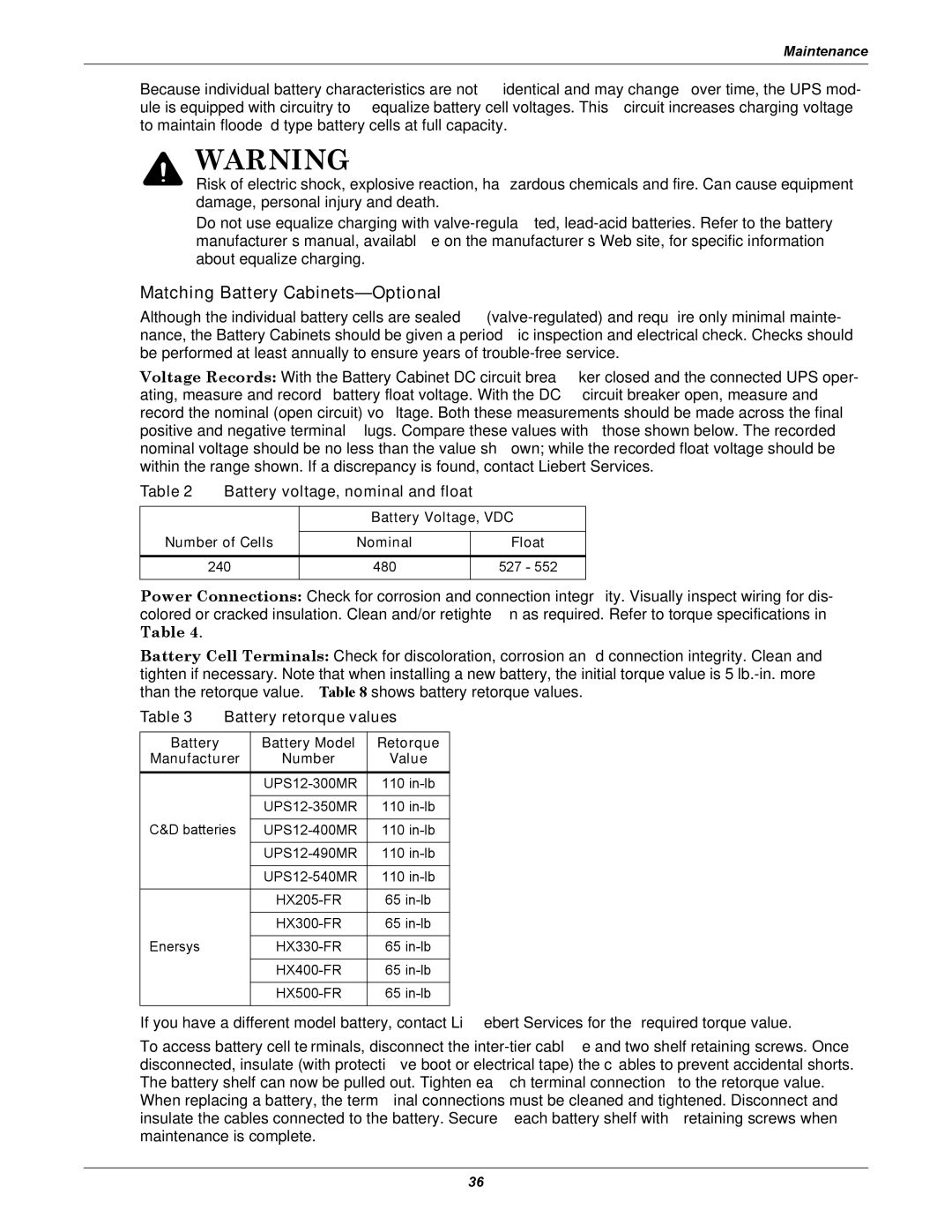
Maintenance
Because individual battery characteristics are not identical and may change over time, the UPS mod- ule is equipped with circuitry to equalize battery cell voltages. This circuit increases charging voltage to maintain flooded type battery cells at full capacity.
! WARNING
Risk of electric shock, explosive reaction, hazardous chemicals and fire. Can cause equipment damage, personal injury and death.
Do not use equalize charging with
Matching Battery Cabinets—Optional
Although the individual battery cells are sealed
Voltage Records: With the Battery Cabinet DC circuit breaker closed and the connected UPS oper- ating, measure and record battery float voltage. With the DC circuit breaker open, measure and record the nominal (open circuit) voltage. Both these measurements should be made across the final positive and negative terminal lugs. Compare these values with those shown below. The recorded nominal voltage should be no less than the value shown; while the recorded float voltage should be within the range shown. If a discrepancy is found, contact Liebert Services.
Table 2 Battery voltage, nominal and float
| Battery Voltage, VDC | |
Number of Cells |
|
|
Nominal | Float | |
|
|
|
240 | 480 | 527 - 552 |
|
|
|
Power Connections: Check for corrosion and connection integrity. Visually inspect wiring for dis- colored or cracked insulation. Clean and/or retighten as required. Refer to torque specifications in Table 4.
Battery Cell Terminals: Check for discoloration, corrosion and connection integrity. Clean and tighten if necessary. Note that when installing a new battery, the initial torque value is 5
Table 3 | Battery retorque values | ||
|
|
|
|
Battery |
| Battery Model | Retorque |
Manufacturer | Number | Value | |
|
| 110 | |
|
|
|
|
|
| 110 | |
C&D batteries |
|
| |
110 | |||
|
|
|
|
|
| 110 | |
|
|
|
|
|
| 110 | |
|
|
|
|
|
| 65 | |
|
|
|
|
|
| 65 | |
Enersys |
|
|
|
| 65 | ||
|
|
|
|
|
| 65 | |
|
|
|
|
|
| 65 | |
|
|
|
|
If you have a different model battery, contact Liebert Services for the required torque value.
To access battery cell terminals, disconnect the
When replacing a battery, the terminal connections must be cleaned and tightened. Disconnect and insulate the cables connected to the battery. Secure each battery shelf with retaining screws when maintenance is complete.
36
